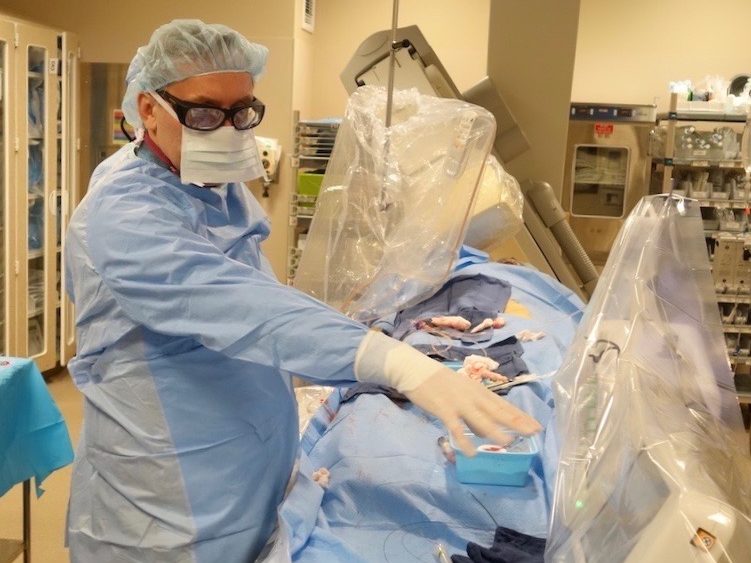Adam Stys, M.D., grew up in Poland with two mathematicians as parents and was supposed to become a computer scientist. Good thing for his patients at Sanford Health and others around the world that he went to medical school instead.
Stys is an interventional cardiologist at the Sanford Cardiovascular Institute in Sioux Falls, South Dakota. He also trains new physicians as program director of the interventional cardiology fellowship accredited by the American Committee for Graduate Medical Education.
Invasive cardiac and vascular procedures such as angiograms, angioplasties and the insertion of stents, require him to inject dye in the patient’s heart and blood vessels to show the anatomy and guide the devices in the heart. However, that dye is toxic and can permanently damage the kidneys leading to significant health issues.
“The amount of dye is directly proportional to the amount of damage the kidney can sustain. The less dye you use, the better the patient will be, the less risk of kidney failure,” Stys said. “Dye load was one of the things that always bothered me. This is not just patient safety but also quality of life, a major change if you end up on dialysis.”
An algorithm to reduce injury
That nagging feeling prompted him to pencil out a simple algorithm on a chart several years ago that helps reduce the amount of dye needed to see blockages. He still uses the same equipment and materials but injects up to five times less dye than the national average.
“We have come up with an algorithm and improved it over a number of years and polished it nicely to the point where the amount of dye we give nowadays is very minimal. And yet we can still see coronary arteries well and perform interventions,” Stys said.
The result?
“Over years since the algorithm was put into practice, I haven’t sent patients to dialysis for just coronary procedures. And, knock on wood, I hope it stays this way,” Stys said. “I think a lot about new techniques and the improvements that can be done to increase patient safety and also increase the efficacy of the procedures. This is a very fertile field of innovation over many, many years.”
How the algorithm works
Stys’ algorithm uses four numbers: total amount of contrast, pressure of injection, velocity of injection and the time it takes for the injection pressure to rise.
“It’s the programming of the settings live during the case,” he said.
“We use a computerized automatic injector instead of manual injections, which is hands and syringe, which most of the places that do procedures like this around the world do. So we have a little computer screen, touch screen, next to the patient that’s sterile and we can directly program every injection with just a few pushes of a finger. It’s very fast. Within a few seconds we can change all of the settings and we can adjust the settings to the patient’s needs. This decreases the dye drastically.”
Besides the injector, the other big contributor to reducing the amount of dye involves advanced catheter techniques.
Simplifying and sharing it
Stys and his algorithm have been featured in reputable publications such as The Journal of Invasive Cardiology and the Indian Heart Journal. He also speaks to various groups and teaches it to his fellows already in their first year of training.
“His goal is training today’s and tomorrow’s doctors on how to use these techniques more safely,” said Rick Evans, a member of Sanford Health’s commercialization team. “He’s using existing devices, techniques and materials and just trying to use them in a smarter way.”
Stys recently updated the algorithm to make it even simpler. “So there will be very basic settings,” he said. “We simplified it to broaden potential users.”
Stys is one of dozens of Sanford Health physicians, researchers and other inventors who contribute to the health system’s innovation efforts.
“At Sanford Cardiovascular Institute, this algorithm is one of the things we do innovatively,” he said. “We’ve published multiple papers on new interventional techniques, first in the world. We do very complex cases. And we do them very safely. Our numbers, compared to the national data registry, are very good when it comes to outcomes.”
More stories
- Podcast: Ex-engineer now designs for heart patients
- Artificial intelligence may help spot cancer in image scans
- FDA names Sanford Health stent graft a ‘breakthrough’ device
…
Posted In Dialysis, Heart, Imaging, Innovations, Physicians and APPs, Sanford Stories, Specialty Care
